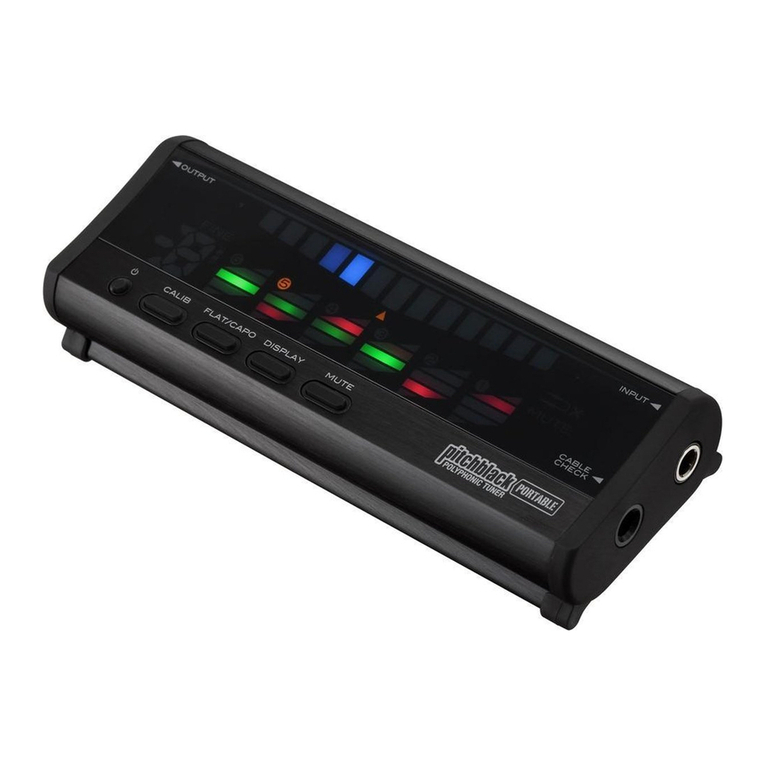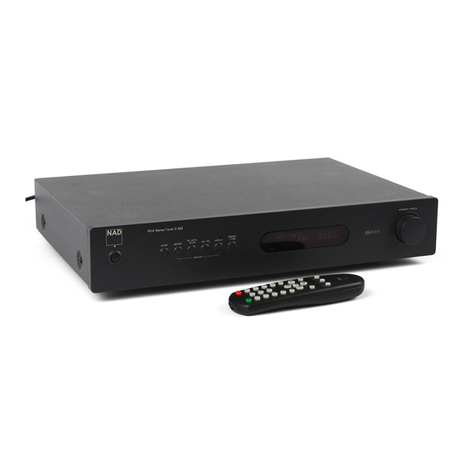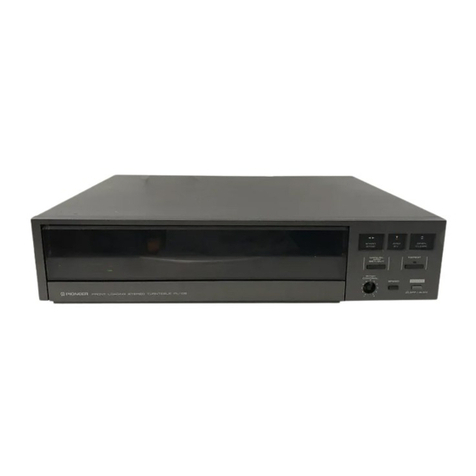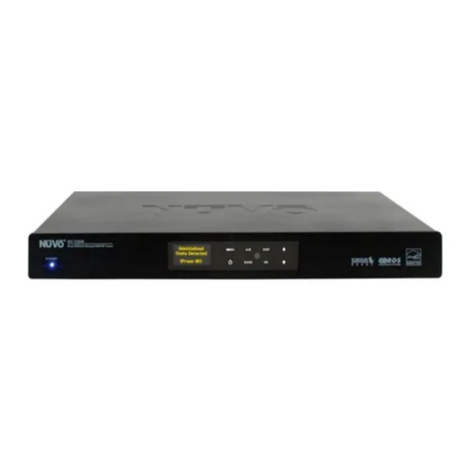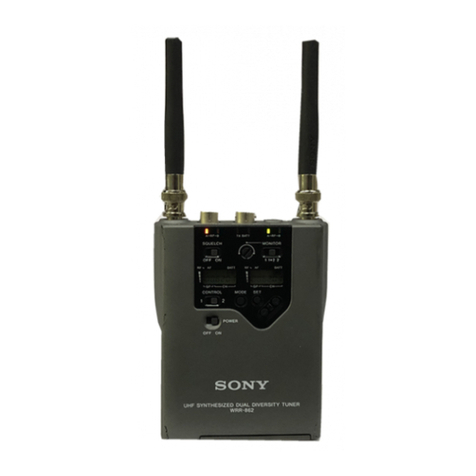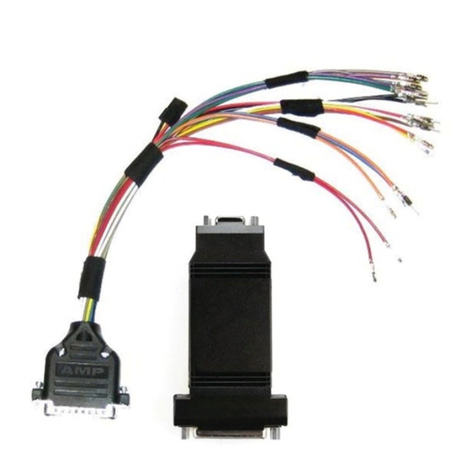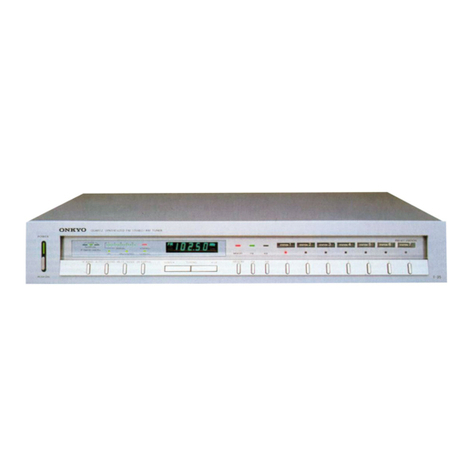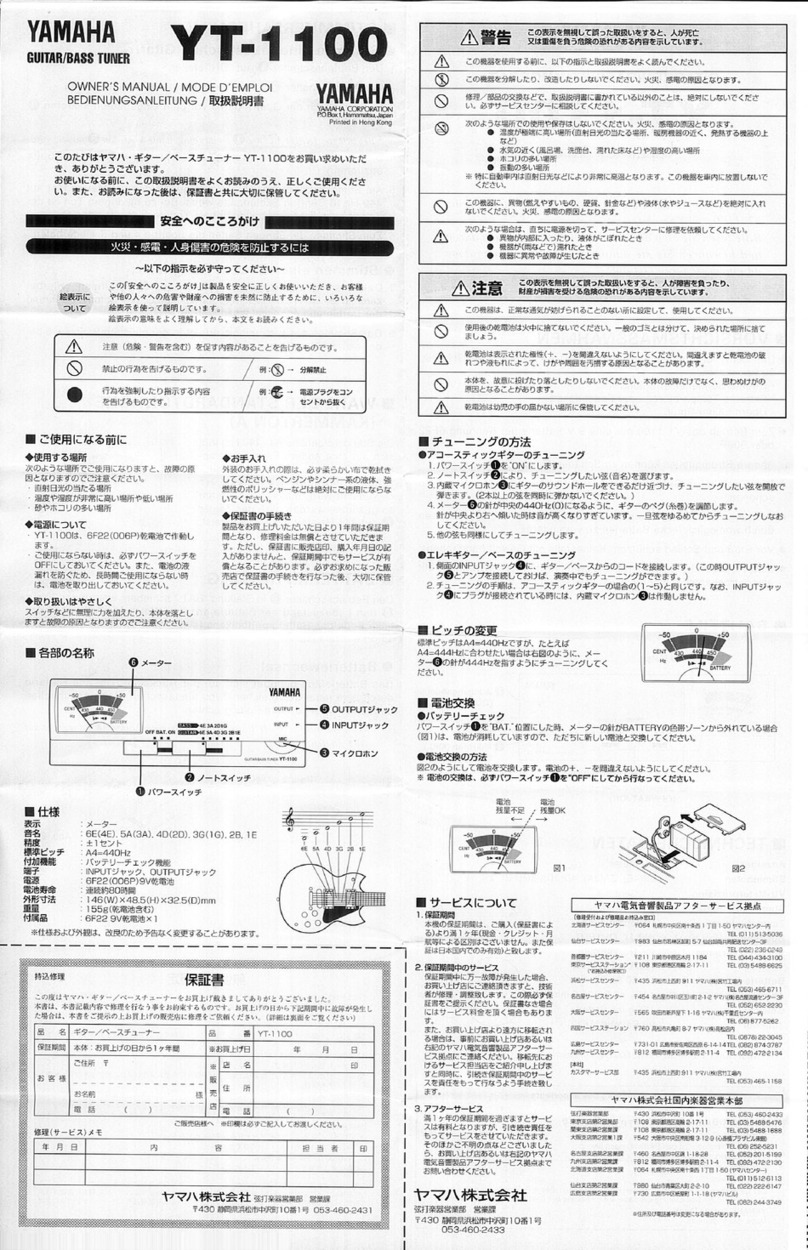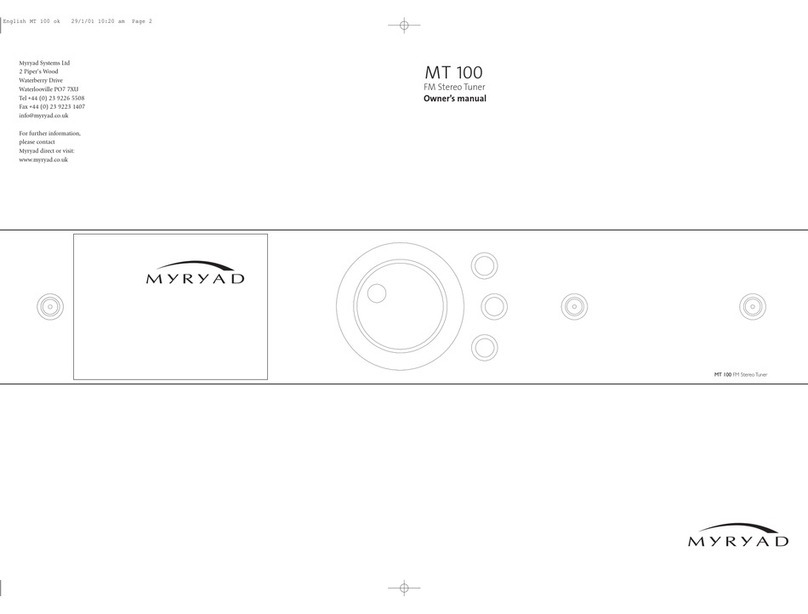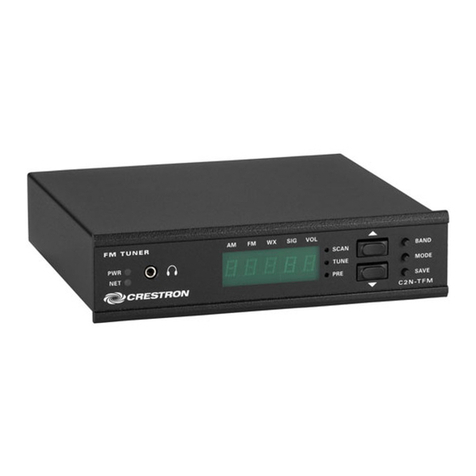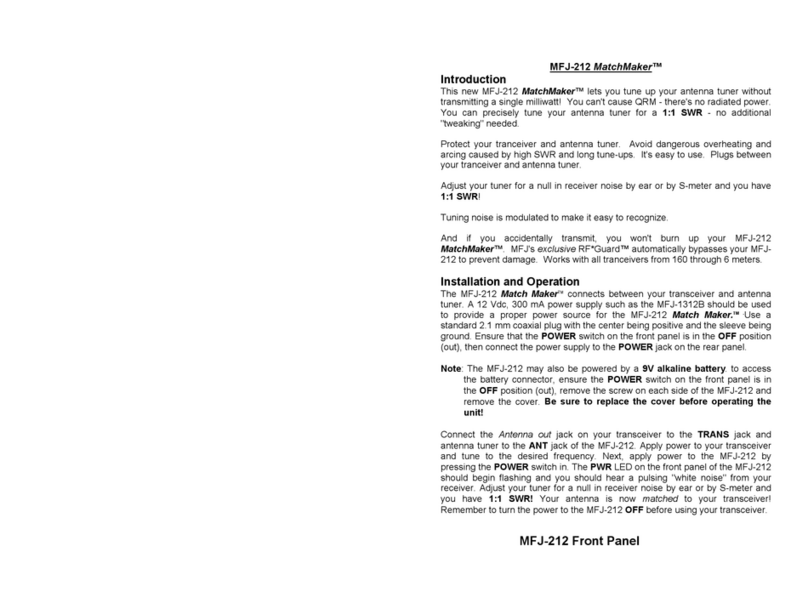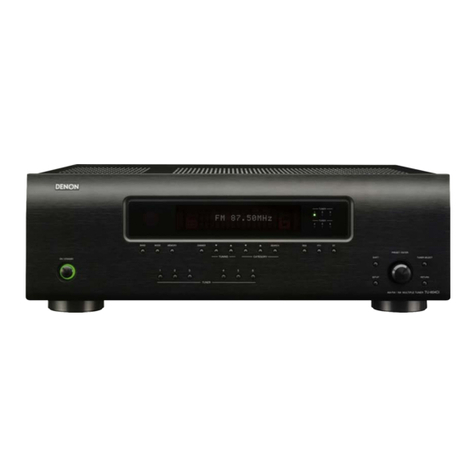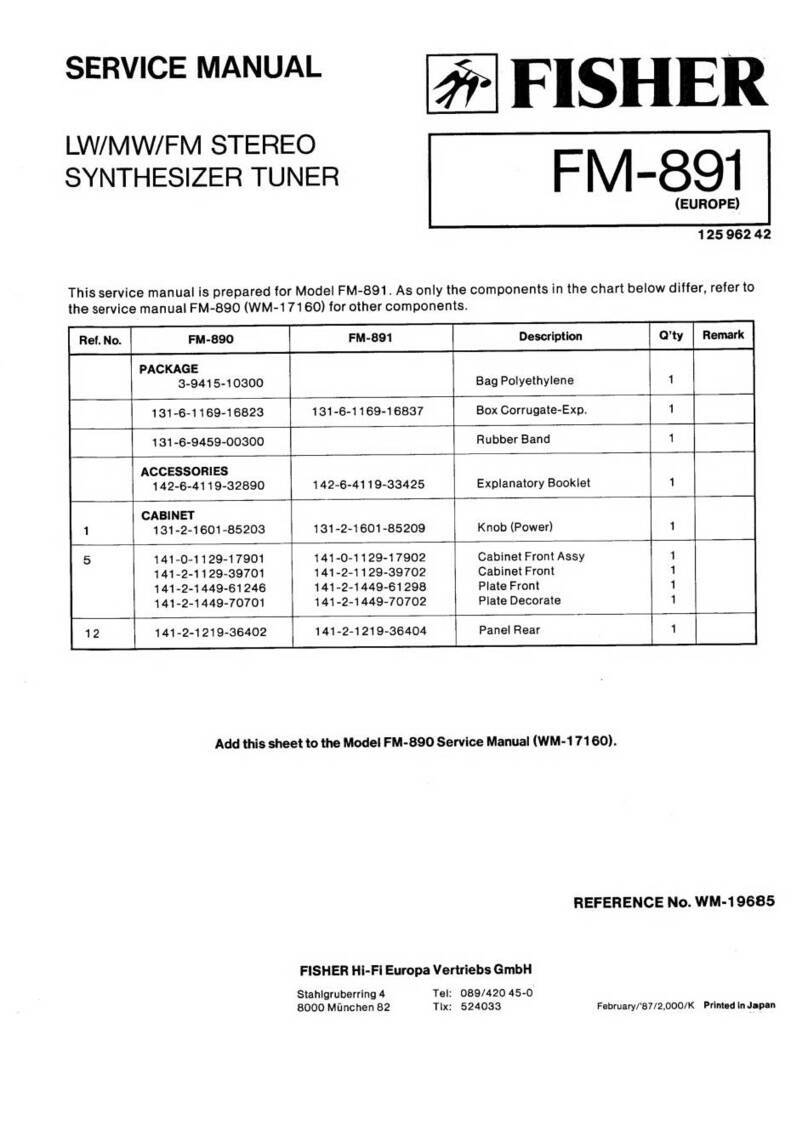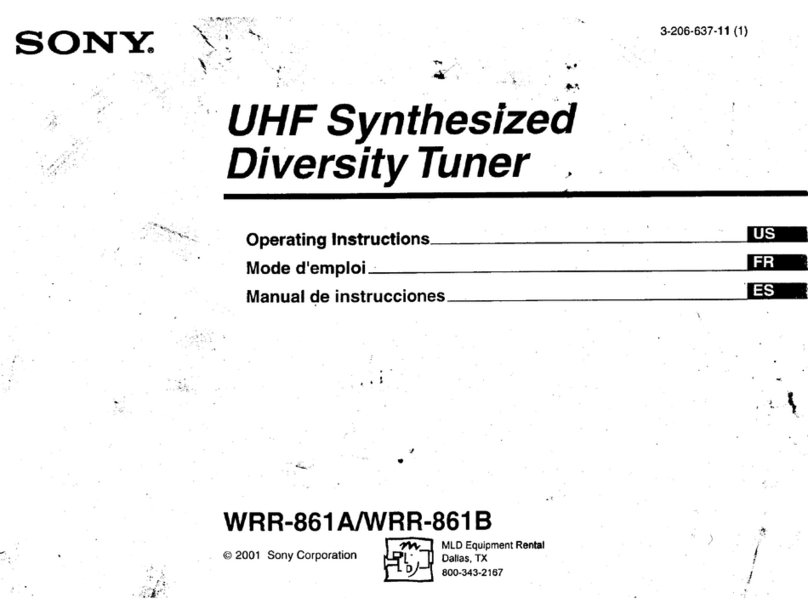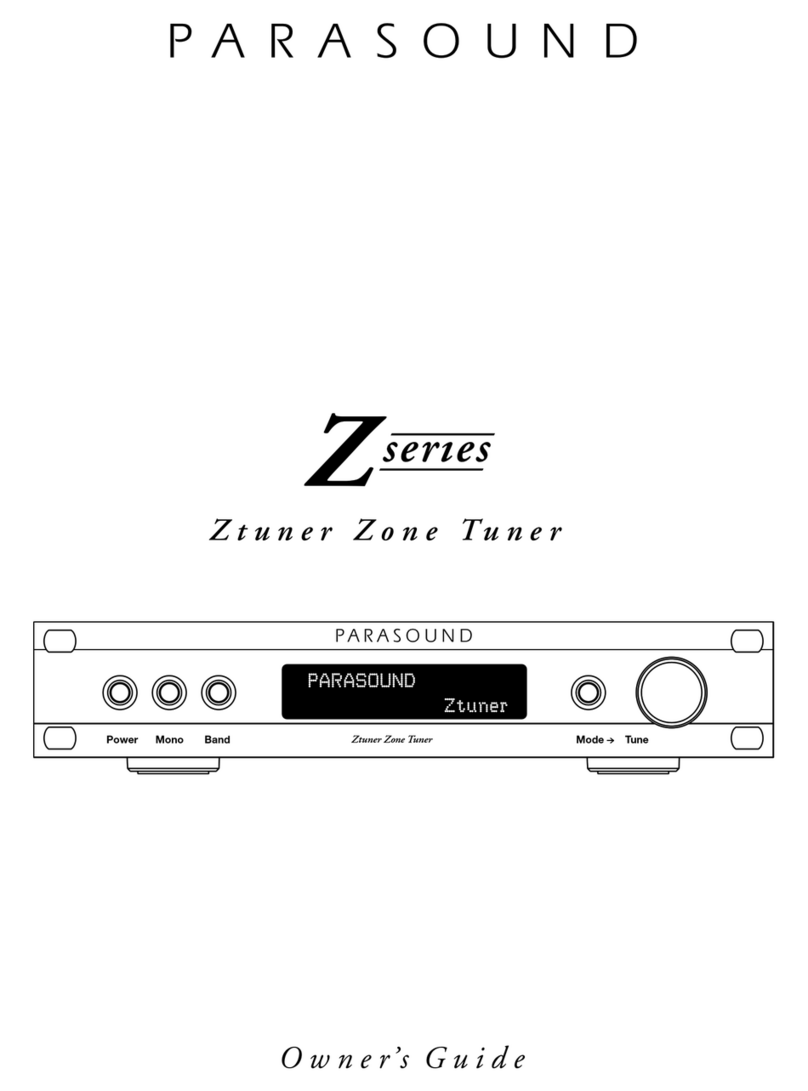SEA 1612C Instructions for use

T
T
r
t
;
T
;
;
;
t
r
T
t
I
;
!---- _
- 5 - -F
]- !|ffi - E-
---_E
- - r E h a-
- - n b - h
ffi H E - r r-
--I--

--- -
- - - H
-l r - -
-----
- n - -
ts - E -
- - - -
----
AUNIT
OFDATAMARINE
INTERNATIONAL
I
NC.
sEA
1612C
r161
zVU
r161zWX
AUTOMATIC
ANTENNA
TUNER
INSTBUCTION
AND
MAINTENANCE
MANUAL
@Copyright
1993,1994
SEA Inc.
All rightsreseryed.
SEAInc.
70302201h
sr, s.w.
Mountlake
Terrace,
Washington
98049
(425) 771-?182*
FAX: (42s)771-2650
MAN-1612C
Revision
D
July2001 -G---
- - - r-
I r - --
- * - --
----F
- I -T E -
- - - - - r
* p -- r -
--I-!5t

IMPORTANT
NOTICE
TOINSTALLERS
The 1ffi2D is designed
to be weatherproof
whenproperly
installed.Be sure
allfasteners
aretight
andcable
entries
sealed. No warranty
claims
willbe allowed
for water
damage
to the contents.

2.
2.1
2.2
TABLE
OFCONTENTS
1.
1.1
1.2
1.3
1.4
PAGE
GENERAL
INFORMATION... .....1
. 1
Overall Description
............ .......-.......1
-
1
Electrical
Configuration ..-.............1
-2
Mechanical
Configuration ...............1-2
Weather
Housing
.1..;1...........| ..............1
-4
SPECIFICATIONSAND PARTSFURNISHED........,.....,....2.1
Specif
ications............ ......2-
1
Parts Furnished............... .2-2
PR|NC|PLEOF OPERAT!ON...-... .......,....3
- 1
Networks........... ..................3
-
1
Schematic
Diagrams ......3
-
1
AutoTuneOperation ...........3
-1
Vswr Detector ..................3
-
3
FrequencyCounter... ............3
-
3
PhaseDetector .................3
-
4
TheControl
Computer............... ............3
-
4
Initialization
And Fireup ...............3
-4
lnformation
Flead .............3
-
5
Information
Write...... ,.....3
-
5
TheProgr:am.............. .............3
-
5
INSTALLATION
PFOCEDURE ....4.
1
Mechanicat
Considerations..... .............4
-1
Electrical
Conslderations.,-...... .........-.4
-2
Electrical
Checkout.............. ............4
-
3
TROUBLESHOOTING....... ....--.-..-5
- 1
COUPLER
WILL
NOT
TUNE
. NOREI-AY
ACTION .-.........5
-1
RELAYS
OPERATE
BUTNO
TUNE ....5
-2
C,OUPLER
TUNES
BUT
NOMEMORY ..5
-3
TUNEB
WILL
NOTDEMAND
ruNE............... .....,,5.3
SCHEMATIC
AND CIRCUIT
BOARD
LAYOUT
SEA 1612CCOMPONENT
PARTSLIST
3.
3.1
3.2
3.3
3.4
3.5
3.6
3,7
3.8
3.9
3.10
3.11
4.
4.1
4.2
4.3
5.
5.1
5.2
5.3
5.4
6.
7-

LISTOF
FIGURES
FIG.
# FIGURE
MME
1.3 Outlineand
Mounting
Dimensions.-...
3.1 Network
Configurations .....,.....3-2
6,1 Antenna
TunerSchematic
(ASY-1616-01)
6.2 Circuit
BoardLayout

1.1
GENEHAL
INFORMATION
OVERALLDESCRIPTION
The SEA 1612C is a fully automatic
antenna
tuning unit,
designedfor the MF-HFspectrum
and compatible
with a wide
variety of antenna systems. This product features an
advanced microprocessor-based
tuning algorithrn which
allows it to tune up on normal voice signals from the
associated transmitter
and also includes a "learning"
algorithm
which allows the controlcomputerto remember
which network
constants
are required
for a given operating
frequency. The memoryfeature
permits
the antennatuner,
once the "learning"
operation
is completed,to retune
a given
frequencyin approximately
20 milliseconds. This is less
than the time required
to say "hello". Antenna tuner
operation
is completely
automatic
and requiresno operator
intervention. lf the antennasystem
is altered
or replaced,
the tuner will automatically
"relearn"
the requirednetworks.
During the learning
period,
operation
is somewhat
slower
and, depending on the particular frequency/antenna
combination,
up to 5 seconds
may be requiredto achieve
a
matched
condition. When the antenna
has been properly
malched,
the tunersignalsthiscondition
by pulling
a control
line low. The controlsignalmay be used to operate
an "all
tuned" indicator
at the operators'
T-Fl position. Such an
indicator
is provided
in the SEA 222, SEA 322 and SEA 225
radiotelephones.
TheSEA1612C
alsoincludes
a "DEMAND
TUNE"function
and
a
'TUNE
LOCKOUT"
capability.
The "DEMAND
TUNE"
function
allowsthe user to forcethe
antenna tuner to retune on demand. This permits
"overwriting"
previously
stored tuneup information
when
desired.
The'TUNE LOCKOUT"
feature
is useful
when
two or more
transmitters
are co-located,
or when it is desirable
to
inhibitthe
AUTO
TUNE
function
foranyreason.
1-1

E.G.:when twoantennas
arein close
proximity,
it is possible
thattransmitting
on oneantenna
may
cause
considerable
RF
to be coupled
into
theadjacent
antenna.
This
can
cause
the
tuner
to reset,
disturbing
the operation
of the radiotelephone.
In
such
cases,
the
"TUNE
LocKour'' feature
ofthesEA 1612c
can
be used
to prevent
the
SEA
1612C
from
entering
thetune
mode until the radiotelephone
it is associated
with is
actually
transmitting.
1
,2 ELECTRICAL
CONFIGURATION
The sEA 1612c matches
the compleximpedance
of the
antennasystem
to a nominal
50 ohms
by-'selecting."the:..,proper
network
from
a possible
combination
of 64 values
of input
c,
32 values
of output
c and
s1z values
of series
L. Network
configuration
is automatically
determinedduring
the tune
cycleand may
be either
a Pl network
or either
of two types
of L network. wheneverpossible,
the L network
will be
selectedf
or maximum
eff
iciency. Tuneup is entirery
automatic
andmay
be accomplished
on voice
signals,
making
it unnecessary
to provide
a "low power
tune"modein the
trans
mitter.
1.3
Thevarious
RF sensors
in the SEA
function
down to power
levels
of
featuremakesthe SEA 1612C
equipment
such as the SEA 225
circuitry
to reduce
the output
power
hish
VSWR.
MECHANICAL
CON
FIGU
RATION
1612Caredesigned
to
10 to 20 watts. This
compatible
with radio
which is equippedwith
levelin the presence
of
All of the circultry
of the SEA 1612Cls contained
on printed
circuit
board PCB-1616-01. This printed
circuitboard is
mounted
on an aluminumshield
plate
with six 6-32 stainless
steelscrews. The shield
plate
is heldin the molded
weather
housingwlth four 10-24
stainlesssteel screws. (Figure
1.3
shows the outline
and mounting
dimensionsof the molded
weatherhousing.)
The printed circuit board is solder-masked
which helps to
prevent
corrosionand moisture
problems.
1-2

12.6"
I
-
A l,rt f D t 'ra.\ftt( tfIED{ IFN}L
6S8 @r{rtuNrc^TroNg
EIF| T'
16:1'
[+osmm]
lztzmm
f-11;" t2eemml--l
I
I
I
L_
[
"*"]
SEA
1612C
ANTENHA
TUNER
OUTLINE
& MOUNTING
DIMENSIONS
FIGURE
1,3
1-3

1.4
Both the so-239 RF connector
and the six pin interface
connector
strip are mounted
on the printed
circuit board
itself. The interface
connector
acceptswire ends directly,
eliminating
any requirement
for special
lugsor lugging
tools.
A PL-259
type
FIF
plug
must
be fitted
to thecoaxiar
feedline.
WEATHER
HOUSING
The sEA 1612c
antenna
tuneris housed
in a weatherproof
molded case designed
to withstand
the environmental
conditions
encountered
aboard
ship when mounted
on the
weather
decks. The internal
constructionis designed
to
withstand
the shock and vibration of marine service.
corrosion-resistant
hardware
and passivated
alroys are
employed
throughout.
stufflng
glands
for the RFand Dc cablesare provided
on the
lower edge of the weather
housing,
along with a 1t4-ZO
stainless
steel
ground
stud. The antenna
connectsto the
ceramic
insulator
on thetopof theweather
housing.
I.5
SPECIAL
MODELS
OFTHE
16I2C
The
l6l2Cis
avaitable
in
thefollowing
two
optional
configurations:
thcl6lZW
and
thc
l6lZWX.
Thel6l2W isai6t2C
with
a
gas
filled
spark
gap
tubcinstalled
onrhe
printed
circuit
boardassembly.
This
part
willshuntexcessivcly
highvoltages
tothe
ground
plane(near
lightning
strikes)
toprevent
darnagetothcRFsensors.The
l612WX
is
al6l2W with
a
RF
relay
assemblythat
shorts
the
antennaoutput
connector
to
ground
when
then
power
tothe
couplcr
is
switched
OFF.Pleasecontact
the
factory
foradditional
information.
1-4

2. SPECIFICATIONS
ANDPARTS
FURNISHED
2.1 SPECIFICATIONS
Frequency
Range 1.6to30.0MHz
RF Power
Capability 150wattsPeak
EnvelopePower
(PEP)
Input
lmpedance 50ohms
VSWR <2:1
PowerRequirements 13.6
VDC
negative
ground
OperatingCurrent 2 Ampsmax.
Tuning
Time "Learn
Mode",
typically
less
than5
seconds
"Educated
Mode",approximately
20
milliseconds
Recommended 23-75
ft. (7-23
meters)1.6-30
MHz
Antenna
Length I ft. (2.7
meters)whip3-30
MHz
Mounting Any position
EnvironmentalTemp.
Range -30"C
to +60oG
Size in:
15X12X
3.9
mm:
381
X304.8
X99
Weight 10 1bs./4.5
kgs.
CaseConstruction Molded
Weatherproof
Control
Cable No.
20Gauge,
3 to5 conductors,
shielded
(not
supplied)
2-1

2.2 PARTS
FURNISHED
1. Antenna
Tuner
with
Cover
and
Bushings
2. Instruction
Manual
2-2

3.
3.1
PRINCIPLE
OF OPERATION
NETWORKS
Figure
3.1 shows
the schematic
diagramfor the two basic
network
configurations.
Note
that the nln network
as viewed
from
the generator
may be configured
as either
"C in" or"C
out",
whichever
is required
by the load. In eithercase,the
endof the networkcontaining
theshuntC elementwill be the
HIGHER
impedance
endofthenetwork.
SCHEMATIC
DIAGHAMS
Figure
6.1is theschematicdiagram
of theantennatuner. RF
inputis applied
to UHFfittingJ1, 13.6VDCis connectedto
the terminalsmarked
GND and + on P1 (Pins1 and 2
respectively),
and an appropriate
antenna
and ground
system
are connectedto feedthrough
insulatorand stainless steel
stud respectively.
The "TND"
flag line (Pin 4 on P1) is
connectedto theremoteindicator
device
used. When
theSEA
16'1
2C is used with the SEA 222, SEA 322 or SEA 225
radiotelephone,
theflagline
is connected
to the"TND"
line
on
theradio's
rear
panel
connector.
AUTOTUNEOPERATION
WhenRFpower
isapplied
to theSEA
1612C
it is first
passed
throughan arrayof detectors
which
determinethe frequency,
load VSWR and the reactancesign. Forward
power is
continuously
monitored,
since
the control
computer
requires
an indication
of bothforward
andreflected
power
in order
to
allow tuningto proceed. ln practice,
the forward
power
detectoris used
by the computer
as a truthcheck
to insure
that
themeasurementsmade
areindeed
a result
of applied
RF
and not spurious
levels
from the data conversion
system.
Tuneup
will ONLYproceed
when sufficient
forward
poweris
present
to provide
this truth check. After passing
through
the detector
system,
the FIF
is applied
to the tunerarray.
This
consists
of 6 capacitors
in shunt
on the input
armof the
network,
arranged
in binary
increments,
I inductors
in the
seriesarm, arranged
in binary
increments,
and 5 more
capacitors
in shunt
on the output
arm,
also
arranged
in binary
increments. Relaysare provided
in conjunctlon
with each
3.2
e.)
\r. (J
3-1

3.4
lumped
constant
whichallowremoval
or entry as desired.
Thus,
it is possible
through
the manipulation
of 26 rerays
to
build
a network
having
64 values
of input
shunt
c, 32 values
of output
shunt
C,and
upto 512
values
of series
L.
VSWR
DETECTOR
Current
transformer
T1 and voltagetransformerTZ, in
conjunction
withterminationresistors
R1 and RSmake
up a
dualdirectional
coupler. Thisdirectional
coupler
is inserted
in the 50 ohmtransmission
linebetween
the input
connector,
J1, andthe tuningnetwork.A sampleof FORWAFID
power
appears
across
termination
Rl, while
d,.simple
of,'REFLECTED
power
appears
across
terminationR5. The FORWARD
and
REFLECTED
power
RF samples
from
the directionalcoupler
aredetected
by diodes
CR1
andCR3. H/Cfilternetworks
are
provided
on both
theFORWAHD
power
and
REFLECTEDpower
signals
and both are clamped
to the +5 Volt rail through
diodesCRZ
andCR4to prevent
overdriving
the A/Dconverter
inputs
ofCPU
chip,U5.
With
voltages
representing
bothFORWARD
and REFLECTED
power
available
to the CPU,it is possible
to compute
the
VSWR
continuously
during
thetuning
process.
FREQJENCY
CCTJN]ER
The
memory
storage
systemin
theSEA
1612C
isbasedonthe
fact that the control
computer
senseswhat frequencyis in
use. This
is accomplished
by applying
a prescaled
sample
of
the RF signalto the the CPU timerinput. The prescaler
consistsof U1A,
U2 andU3. A sample
of the RF signalis
appliedthrougha biasedclamping
network
consisting
of CRg,
CR10,R17,R18,R19
andR20,
to theinput
of CMOS
schmitt
triggerU1A. The shaped
output
signalis then divided
by
2048through
cascaded
counters
U2andU3.
The outputfromthe counter
train
alsoservesas an interrupt
generator
fortheCPU,
actingas an 'FlF
present"
indicator.
3.5
3-3

IRQsignal
consists
of a logic
'low" signal
on pin z of Us and
may be derived
from any of several
sources.
1. The output
from the frequency
counter
chain (U2, U3) is
AC coupled
to the gate of MOSFET
amplifier
Q2. The drainof
Q2 is connected
to pin 2 of U5. Thus,
whenever
the frequency
counterls generating
an output,
an interrupt
signal
is present
onthe
CPU
IRQ
pin.
2. The
"DEMAND
TUNE"
input(P1,
pin
3) isconnected
through
a pairof cascaded
inverters
U1C and U1B and steering
diode
CR12
to the CPU IRQ
pin. Theinverters
are biased
in sucha
manner
as to cause
theoutput
of
'U1B-to''remain""high"
UNLESS
the
"DEMAND
TUNE"
line
is
grounded,
When
the
'1DEMAND
TUNE"
input
is grounded,
U1B
will
pull
the CPU IRQpin lowthrough
CR12,
generating
an input
signal.
3. Beginning
with PC board
HEVISION
"C",
an additional
lFlQ
option
has beenadded. lt is possible
to generate
an interrupt
via the PTT inputline
(P1,pin 5). The outputof PTT inverter
U1F can be diodeORedinto the inputof U1B by putting
a
shorting
bar on the pinsof JU4. With
JU4 thus
jumpered,
an
interruptsignal is generated
whenever
the PTT input line
goes low. Note that if this option
is selected,the PTT line
must be connectedto the system
radiotelephone
in order to
sense
the "keyup"voltage
on the radiotelephone
PTT line. lt
is this open circuit voltage which prevents U
1f from
generating
a continuous
interrupt
signal.
3.9 INFORMATIONREAD
The data sensors(previously
described)
'arei
'interf
aced with
the CPUthrough
the AIDinput
ports,
PC3,PC4and PCs. Once
the tune algorithm
is running
(iollowing
an interruptrequest
as outlinedaboveand lacking
any applicabte
prestored
data)
the program can access any desired variable by merely
"looking"
at the desired
input
port.
3.1O INFORMATION
WRITE
When
the CPUrequires
a change
in the lumped
RF tuner
parameters,
lt writes the desired
data into the seriesto
parallel
buffer. Thisis done
by outputting
thedesired
status
of the network
relays
in a serial
data
stream
fromPBS
(SDO)
ontheCPU. Clocking
isderived
from
PB7
(SCK).Forexample,
3-5

3-6
3.7
3.8
PHASE
DETECTOR
T3, cRs, 6, 7 andB andtheassociated
components
form
a
phasedetector
which indicates
the sign of any reactance
associatedwith the antenna/tuner
system
as seen from the
generator.operationally,
a line
current
sample
is compared
in phase
witha voltage
sample
in a double
balanced
diode
ring. output
polarlty
is NEGATIVE
for a net cApAGlT]vE
reactance.
Theoutput
of the phase
detector
is connected
to
anA/D
input
onthe
system
CpUchip.
THE
CONTHOLCOMPUTER
Actual
antenna
matching
is implemented
though
a tuneup
algorithm
contained
in the memory provided in the
controller-computer
system. The computer
itself
is designed
aroundthe
HCMOS
68Hc705Pgp
singre
chip
cpU. This
device
waschosen
for its'
versatile
instruction
setandon-chip
RoM,
RAM
and
A/D
converter.
control
of theantenna
tuner
relays
is done
through
u8, ug and u10,together
withrelay
drivers
u11,
u12
and
u13.
ug,ug and
u10
form
a serial
to parallel
interface
port. clocK and DATA
signars
are provided
from
CPU ports
pB7 and PBs,
respectively.
In operation,
data is
transferred
into the cPU underprogram
contror
from the
array of sensors. Essentially,
the program
monitors
the
statusof the input sensors
and, starting
f
rom a preset
condition,
manipulates
the RF elements
through
its' control
algorithm
to achieve
a correctly
tuned
condition. At the
completion
of the tuning
algorithm,
the computer
generates
a
table in non-volatile
memory
which
correlates
the status
of
the various
network
relays
with the appliedRF frequency.
This
table
is stored
in EEPROM
u4 and
is used
to provide
the
"learning"
feature
in the SEA 1612C. After storing
and
latching
the network
status,
the CPU returns
to the "STOP"
mode
and
waits
foranother
"TUNE
REQUEST"
condition.
INITIALIZATION
AND
FIREUP
Since
any microcomputergenerates
RF noisewhile
running,
U5 is normally
heldin the 'STOP"
mode
and requires
an
interrupt
signal
to startprogram
implementation.The CPU
3-4

IRQsignal
consists
of a logic
'low" signal
on pin z of Us and
may be derived
from any of several
sources.
1. The output
from the frequency
counter
chain (U2, U3) is
AC coupled
to the gate of MOSFET
amplifier
Q2. The drainof
Q2 is connected
to pin 2 of U5. Thus,
whenever
the frequency
counterls generating
an output,
an interrupt
signal
is present
onthe
CPU
IRQ
pin.
2. The
"DEMAND
TUNE"
input(P1,
pin
3) isconnected
through
a pairof cascaded
inverters
U1C and U1B and steering
diode
CR12
to the CPU IRQ
pin. Theinverters
are biased
in sucha
manner
as to cause
theoutput
of
'U1B-to''remain""high"
UNLESS
the
"DEMAND
TUNE"
line
is
grounded,
When
the
'1DEMAND
TUNE"
input
is grounded,
U1B
will
pull
the CPU IRQpin lowthrough
CR12,
generating
an input
signal.
3. Beginning
with PC board
HEVISION
"C",
an additional
lFlQ
option
has beenadded. lt is possible
to generate
an interrupt
via the PTT inputline
(P1,pin 5). The outputof PTT inverter
U1F can be diodeORedinto the inputof U1B by putting
a
shorting
bar on the pinsof JU4. With
JU4 thus
jumpered,
an
interruptsignal is generated
whenever
the PTT input line
goes low. Note that if this option
is selected,the PTT line
must be connectedto the system
radiotelephone
in order to
sense
the "keyup"voltage
on the radiotelephone
PTT line. lt
is this open circuit voltage which prevents U
1f from
generating
a continuous
interrupt
signal.
3.9 INFORMATIONREAD
The data sensors(previously
described)
'arei
'interf
aced with
the CPUthrough
the AIDinput
ports,
PC3,PC4and PCs. Once
the tune algorithm
is running
(iollowing
an interruptrequest
as outlinedaboveand lacking
any applicabte
prestored
data)
the program can access any desired variable by merely
"looking"
at the desired
input
port.
3.1O INFORMATION
WRITE
When
the CPUrequires
a change
in the lumped
RF tuner
parameters,
lt writes the desired
data into the seriesto
parallel
buffer. Thisis done
by outputting
thedesired
status
of the network
relays
in a serial
data
stream
fromPBS
(SDO)
ontheCPU. Clocking
isderived
from
PB7
(SCK).Forexample,
3-5

3.11
it is desired at some point in the tuneup sequence to
INcREASE the inductance
by one binary increment. To
accomplish
this, the cPU examines
the binary number
representing
the status of the L controlrelays,decrements
that number
by one and clocksthat number
one bit at a tirne
into the series to parallelbuffer.
THE
FROGRAM
The control
algorithm
is containedin CPU ROM. The actual
program
consists
of manysubroutines
and branchstatements
in "machine
language"
for the 68HC705P9P.
This program
is
complex,
proprietary
and'protected
$y':,iQspyr:ight:"-.
For these
reasons,
no detailed
treatmentof the program
will be given
here. A general
understanding
of the process
may be had by
examination of the key steps the program makes in
determining
the lumped
constants
required
to tune a 25 foot
antenna
(for example)
at a frequency
of first 4 MHz and then
1.6 MHz. In the 4 MHz case, immediatelyafter startupthe
program
will first examine
the EEPROM
table for applicable
data. In the eventthat no previously
storeddata is found, or
that any such data is testedand found incorrect,
the program
will initiate
a tuneup
sequence.By examinationof the phase
detector
the determination
is made that the antennais short
(capacitive)
at the drive f
requency,and so series L is
inserteduntiIthe phase detectorindicates that the load is
no longer
capacitive.At this point
the program
measuresthe
VSWR. lt will generally
be greater
than 2:1 and if so, the
program
increments
the inputC whilemanipulating
seriesL
to simultaneouslyraisethe''input'impedance
"and maintaina
resistive match. This process is continued until a
satisfactory
VSWR is obtained.
' Following
tuneup, the
networkdata is storedagainst
an addressdetermined
by the
frequency measurementalready made and stored. The
program
is then terminated.
If, in the previous
example,
it is
not possible
to normalize
the reactance
of the antenna
with
the available
supply
of L (possible
at 1.6 MHz),
the program
witl increment the output C and search the L again,
continuing
in this fashionuntil the phase detector
indicates
that the load is resistive. lt will then measure
the VSWR and
proceedas before. The difference
is that now the network
will be a Pl network instead of the original L network'
Additional
subroutines
are included
in the program
which set
3-6

various
"breakpoints"
in theallowable
constants
as a complex
function
of frequency.
In fact,
the overail
"program"
actually
consists
of a program
sET whichis designed
to allow
maximum
flexibility
while stilt maintaining
high operating
speed.
Another
unique
feature
of the sEA 1614c
is the 'DUPLEX"
operating
mode.
Thismode
is provided
in order
to allow
the
operator
to eliminate
the largeloss in receiving
sensitivity
which
canoccurwhen
the sEA 1612c(or
anyantenna
tuner
for that matter)
is used in the z-g MHz spectrum. The
sensitivity
lossoccurs
as a result
of the relatively
narrow
bandwidth
of the matching
network
when"-'used-,with.
short
antennas.
Remember
thatthetuner
responds
to TRANSMITTEFI
frequencies
on tuneupand so acts as a narrowband
preselector
filter at the transmitter
frequency. Normally,
this createsno problem,
but in special
cases,particularly
when
the antenna
system
is short,
the ground
system
good,
and the receiver
frequency
is lar removed from the
transmitter
frequency,
considerable
loss in receiver
sensitivity
can result. Theproblem
is especially
acute
when
thewide
split
puts
the receiver
frequency
on the "high
side",
since
the tuning
network
is generally
configured
as a low
pass
filter. The "DUPLEX"
mode
makesuseof a special
control
algorithm
which,
when
energized,
senses
the RECEIVE
modeand switches
out all tuningelernents.
Thisconnects
the antenna
directly
to the input
of the receiver
and,while
the receiver
input
willnotbe "matched"
to the antenna,a
substantialincrease
in overallsensitivitywill generally
result. When
transmitter
operation'resumes,
the SEA1612C
will revert
to the previously
storedtunedata.
lf it is desired
to utilize
theDUPLEXoperatingmode,
contact
the f
actory lor information regarding the control
requirements.
3-7

4.
4.1
INSTALLATIONPROCEDURE
MECHANICAL
CONSIDERATIONS
The
SEA
1612C
requires
only
thata sourceof 13-6
VDC,
anRF
transmission
line(RG-58/Uup to 30 feet,
RG-213/U
over
30
feet)and a suitableantenna/ground
system
be attached. No
bandswitch
information,
low power
tune, or "handshake"
is
requiredto the FIF
generator,
since
thecoupler
tunes
on voice
signals. Power
consumption
is nominally
less than1 amp,
allowing
the use of light3 to 5-conductor
shielded
cable
for
reasonable
run lengths. (NOTE:
The
"extra,:conductors
in the
power
cable
arelo provide
for an "ALL
TUNED"
indicator
flag
and/or
the "TUNE
LOCKOUT"
and"DEMAND
TUNE"
feature(s)
when
desired.
Weatherdeck
mounting
is permitted
for the SEA 1612C
but
years
of marine
experience
indicate
that insidemounting
or
even just splash-protected
mounting
is to be preferred,
particlarly
in cold, damp environments.
See Figure1,3,
"Outline
afld Mounting
Dimensions',
for details
regarding
the
location
of the mounting
holesfor the SEA1612C. Although
the SEA1612C
maybe mounted
in anyattitude,
care
should
be taken
to insurethat the locationchosen
is accessible
for
service
and thatthe breathing
vent hole(located
on the rear
of the molded case) is neither blocked or routinely
submerged.
The baseof the antennashould
be connected
to the high
voltagefeedthrough
insulatoron the top of the SEA 1612C
weather
housing.
Note
thatthis insulator
is not designedto
support heavy mechanical
loads. lf such loading is
encountered,
the useof a strain
insulator
is required.
The ground
systemshould
be connected
to the 114
inch
stainlesssteel stud protruding
from the bottom of the
weather
housing. Connection
to the ground
system
andthe
ground system itself are of extreme importance
for a
successful
installation.
Ground
runs of over a few inches
shouldbe made
from
4 inchwidecopperstrap
or better. The
actual
ground
system
shouldbe as good
as possible
andmay
consistof screening
embedded
in decksor roofs,
coamings,
4-1

4.2
rails,
stack
shrouds,water
and/or
fueltanks,
etc. Shipswith
a non-conducting
structure
suchas iiberglass
require
careful
attention
to detail to provide
an adequate
groundsystem.
Please
note that this attention
to ground
integrityis NOT
unique
to the sEA 1612c. ALLshipboard
installations
have
thesamerequirements.
TheSEA1612c
autotune
algorithm
is
capableof providing
an adequate
impedance
matchfor an
extremely
wide variety
of antenna/ground
systems. This
capability
will insure proper operation
of the system
radiotelephone. lt can NOT however
insure that the
antenna/ground
system
will radiateRF energyeffectively.
Suchradiation
efficiency
is solely
a function
of the antenna
and ground
installation.
A"PROPERT"'ANTENNA/GROUND
INSTALLATION
IS
OF
PARAMOUNT
IMPORTANCE!
ELECTH]CAL
CONSIDERATIONS
Connector
P'1on the antenna
tuner printed
circuitboard
provides
the cable
interconnectfor power,
shield
ground,
the
"ALL
TUNED"flagandwhen
desired,the
"DEMAND
TUNE'
and/or
'TUNE
LOCKOUT"
features.
DC Power
is connected
to terminals
1 and
2 of P1. Pin1 is
the negativeterminaland
pin2 is the positive
terminal.
The
coupler
runsoff a nominal
13.6
volt sourceand the entire
tuner is protected
againstreversed
polarity
connection
by
series
diodeCRl5.
A remote
"ALL
TUNED"indicator
canbeconnectedto pin4 of
P1
. Thistermlnal
is pulled
lo ground
when
the tunerhas
completed
theantenna
tuneupcycle. Radiotelephones
like
the
SEA
222,
SEA322andSEA'225
aredesigned",to',makedirect
useof the"ALL
TUNED"
flag
line. Simply
connect
the"TND"
terminal
(P1,
Pin4) to the radiotelephone
"TND"
terminal.
The
SEA1612C
-DEMAND
TUNE"
feature
allows
the
operator
to
overridethe channel
storagememory
whendesired. Thisis
accomplished
by momentarily
grounding
P1, Pin 3. lf this
featureis to be used
at the radiotelephone,connecta wire
from
P1,
Pin
3 through
a momentaryswitch
to ground.
when two or moreradiotelephone
systems
are co-located,
it
is commonplace
{or a transmission
on one system
to upset
4-2
Other manuals for 1612C
1
This manual suits for next models
2
Table of contents
Other SEA Tuner manuals

